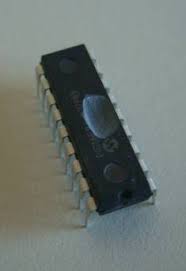While calibrating the baud rate period, the BRG registers are clocked at 1/8th the preconfigured clock rate. Note that the BRG clock will be configured by the BRG16 and BRGH bits by Read Out Heximal of Microcontroller dsPIC30F4013. Independent of the BRG16 bit setting, both the SPBRG and SPBRGH will be used as a 16-bit counter.
This allows the user to verify that no carry occurred for 8-bit modes by checking for 00h in the SPBRGH register. Refer to Table 18-4 for counter clock rates to the BRG.
While the ABD sequence takes place, the EUSART state machine is held in Idle. The RCIF interrupt is set once the fifth rising edge on RX is detected. The value in the RCREG needs to be read to clear the RCIF interrupt. The contents of RCREG should be discarded. Note 1: If the WUE bit is set with the ABDEN bit, Auto-Baud Rate Detection will occur on the byte following the Break character.
2: It is up to the user to determine that the incoming character baud rate is within the range of the selected BRG clock source. Some combinations of oscillator frequency and EUSART baud rates are not possible due to bit error rates. Overall system timing and communication baud rates must be taken into consideration when using the Auto-Baud Rate Detection feature.

Since the BRG clock is reversed during ABD acquisition, the EUSART transmitter cannot be used during ABD. This means that whenever the ABDEN bit is set, TXREG cannot be written to. Users should also ensure that ABDEN does not become set during a transmit sequence. Failing to do this may result in unpredictable EUSART operation.
The Asynchronous mode of operation is selected by clearing the SYNC bit (TXSTA<4>). In this mode, the EUSART uses standard Non-Return-to-Zero (NRZ) format (one Start bit, eight or nine data bits and one Stop bit). The most common data format is 8 bits when Read Out Heximal of Microcontroller dsPIC30F4013.
An on-chip dedicated 8-bit/16-bit Baud Rate Generator can be used to derive standard baud rate frequencies from the oscillator. The EUSART transmits and receives the LSb first. The EUSART’s transmitter and receiver are functionally independent but use the same data format and baud rate.
The Baud Rate Generator produces a clock, either x16 or x64 of the bit shift rate depending on the BRGH and BRG16 bits (TXSTA<2> and BAUDCON<3>). Parity is not supported by the hardware but can be implemented in software and stored as the 9th data bit.
When operating in Asynchronous mode, the EUSART module consists of the following important elements:
Baud Rate Generator
Sampling Circuit
Asynchronous Transmitter
Asynchronous Receiver
Auto-Wake-up on Sync Break Character
12-bit Break Character Transmit
Auto-Baud Rate Detection

